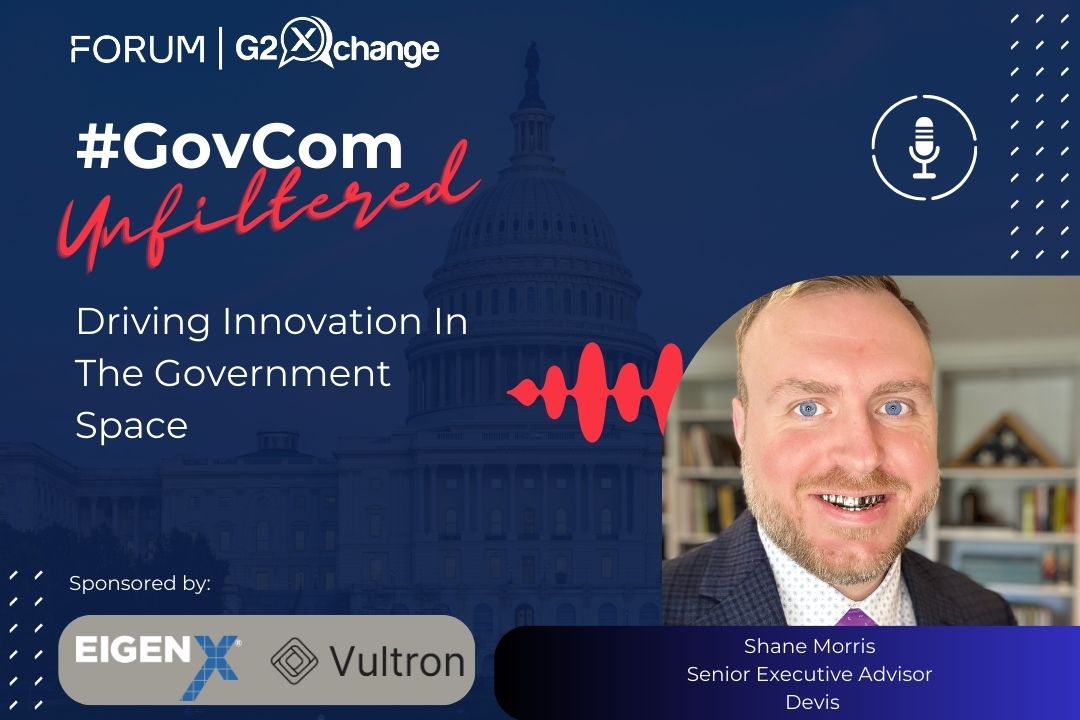Susan Sharer, Executive Vice-President with FedHealthIT, recently spoke with Neil Evans, MD – Chief Officer for the Office of Connected Care in the Veterans Health Administration (VHA) within the Department of Veterans Affairs (VA) about Telehealth and Connected Care, the opportunities, the advances the VA is already making, and the future.
What is the Connected Care Transformative Initiative All About?
Our mission statement is “Access and the Veteran experience will be enhanced through health information technologies that are effectively integrated into the daily lives of Veterans and VA staff.” A patient’s health journey doesn’t occur just in an exam room with a clinician, but rather, plays out on a daily basis throughout their lives. Technology now allows us to more effectively extend the resources and relationships of the Healthcare system into the daily lives of the patients we serve. At the center of Healthcare are the relationships between providers and patients that are built on trust; technology wisely applied can enhance those relationships and ultimately improve health.
The VA has been pushing the envelope over the past decade, using technology to engage Veterans, wherever they are, to create a better user experience. This means looking at the delivery of care and regularly integrating new capabilities into the workflow of staff, including virtual care. But to emphasize, the goal is not just about using technology for its own sake. Our goals are to enhance relationships between Veterans and VA staff, to improve the quality and experience of care, and to increase the convenience and efficiency of care delivery. Connected Care and Telehealth are playing a big part in VA’s overall transformation efforts.
Can you give us some examples?
One way to partition VA’s Telehealth program is to think about the location of the Veteran as they receive care through Telehealth: in the home; in the outpatient clinic; and as an inpatient in the hospital. In the home, we are currently providing remote monitoring with care management for more than 145,000 Veterans annually, many of whom might otherwise need institutional care but instead, are able to safely remain in their home supported by technology and an associated close collaboration with their clinical team.
We also recently released the VA Video Connect application, which allows VA clinicians to easily connect with Veterans through a secure video conference into the home, using nearly any browser or mobile device. VA Video Connect can be used across the full spectrum of clinical specialties, but it might be good to highlight its proven value in the delivery of mental health care, including evidence-based psychotherapy.
Telemental health care has been shown to be the equivalent to in-person treatment and for many is preferred to in-person care. This presents an amazing opportunity for VA to deliver in-home, quality care and presents an optimal choice for many patients, including Veterans with PTSD or other challenges.
In our outpatient clinics, Telehealth allows us to connect Veterans with the providers who can best serve their needs, even when those providers aren’t physically located at their particular clinic. Video Telehealth in the clinic is more than just a video conference; our technologies also allow providers to complete a full physical examination remotely.
Also in the clinic, we are able to support asynchronous Telehealth, which is sometimes referred to as store-and-forward Telehealth, with a particular emphasis on Dermatology and Ophthalmology images. Last year, we supported more than 336,000 Veterans through synchronous video visits in more than 50 clinical specialties, and more than 306,000 Veterans through asynchronous modalities. When we think of Veterans who may be in rural or remote locations, being able to connect with a provider who may not otherwise be accessible, is key. Bringing expertise and specialized medicine virtually, into whichever clinic they are closest to, gives the Veteran the kind of quality care they deserve, conveniently and effectively.
The hospital (inpatient) setting provides another great example of the way we can leverage Telehealth, even in the highest acuity setting to ensure quality of care. Through TeleICU, Veterans in an ICU, even in more remote locations, can have access 24/7 to a board-certified intensivist. Regardless of their location, the technology infrastructure ensures they are able to connect with the best provider to meet their particular needs.
How do you think strategically about Telehealth?
[su_pullquote align=”right”]Telehealth has proven useful to improve the accessibility of care, to improve the capacity of the Healthcare system to deliver care, and to improve the quality of care that Veterans are able to receive independent of location.[/su_pullquote]Strategically, the VA, as a national Healthcare system, is able to implement Telehealth at three levels: locally, within a given market area; regionally; and nationally. In each of those settings, Telehealth has proven useful to improve the accessibility of care, to improve the capacity of the Healthcare system to deliver care, and to improve the quality of care that Veterans are able to receive independent of location.
Starting at the facility level, our Medical Center Directors, who are managing the care of Veterans across their local market, are increasingly thinking about the ways Connected Care and Telehealth can be used to enhance access to everyday Healthcare delivery. For example, when a patient comes into the clinic for a visit and is found to need short-term follow up to check the success or side effects of a medication, that follow up can often be delivered more effectively and conveniently for the patient through a phone call, video chat, or even a secure email exchange, rather than requiring another in-person visit.
Regionally, Telehealth can be used to build capacity to meet the needs of the larger VA Healthcare system. Consider an unanticipated loss of a specialized provider in one of our local markets, a surge in care needs, unanticipated interim staffing requirements, or areas where hiring certain types of expert providers may be challenging. These are all situations where Telehealth can be leveraged, providing surge capacity across a broad geography, supporting uniform access to quality Healthcare across the entire system.
As an example, in June 2016 we had an idea to build regional Telemental Health hubs to provide added capacity for mental health care delivery, with a goal of reducing disparities in provider availability caused by hiring challenges, unanticipated losses of providers, and the like. Today we have 10 such Telehealth hubs operational across the country with 191 spoke sites online and another 67 additional planned spoke locations. What began with an idea in June 2016, by August 2017, has provided 80,000 visits to more than 20,000 patients. One example is our Salt Lake City hub which is staffed with a team of psychiatrists and psychologists who see patients by video full time, delivering mental health care to 54 community clinics across the region. Other regional VA efforts include Primary Care hubs, Rehabilitation Medicine hubs, and Sleep Medicine hubs.
The use of Telehealth as a national resource to increase the quality of care delivery independent of location is particularly compelling when we consider the breadth and depth of expertise found in our VA clinical workforce. The use of Telehealth, for Veterans with highly specialized needs, can match them with a provider who is uniquely equipped to treat their rare disease or clinical condition, regardless of where that provider is in the country.
For example, our national Telegenomics center in Salt Lake City delivers access to this emerging and specialized area of medicine to Veterans across the country and our national Telemental Health Center in West Haven matches highly specialized mental health clinicians with Veterans with unique mental health needs, wherever they are.
Is there any insight you can offer on the budgets for Telehealth and Connected Care?
In the future, I don’t think it will be routinely called Connected Care or Telehealth; ultimately, this all needs to be so integrated into Healthcare delivery that it just becomes known as Healthcare. And the cost of delivering care through technology will be a well understood requirement for any Healthcare system.
At the moment, our estimated spend on Telehealth is around $1.2 billion, but this includes provider costs, which can be a bit misleading. Ultimately, all providers will likely be delivering at least a portion of their care through Telehealth. But independent of the modality, whether that be in-person or virtual, they would be delivering care anyway, and so their salary isn’t really a unique Telehealth expenditure.
At the same time, there will always be unique infrastructure needs and costs to support technology enabled care and I’m confident that as we continue to expand care delivery by Telehealth, those needs and the associated spend will continue to increase. For any business to remain competitive these days, a significant investment in the digital space is an absolute requirement.
Are there any closing thoughts?
This is an important moment in time for Connected Care. Faced with an aging population who are living longer and who have increasing Healthcare needs, combined with a limited clinician workforce with shortages expected to continue, and a Healthcare system where costs are high, there are a lot of challenges we need to address nationally. Telehealth is part of the solution to those challenges.
Telehealth succeeds when you identify a real clinical problem and then ask the right questions: Is there a way I can meaningfully leverage technology to solve this problem? Is there a way technology or Telehealth can be used in this situation to improve access, to expand our capacity to care, to improve our efficiency, to increase quality, or to lower cost?
At VA, we’re not going to stop asking and answering those questions. We have been a leader in Telehealth and are excited about the even greater opportunities before us.
 About Dr. Evans: The Office of Connected Care manages VA Telehealth, My HealtheVet, the VA Mobile program, and VHA’s Innovation initiatives. Beyond his role with the Office of Connected Care, Dr. Evans is also an active primary care physician and manages patients at the D.C. Veterans Affairs Medical Center.
About Dr. Evans: The Office of Connected Care manages VA Telehealth, My HealtheVet, the VA Mobile program, and VHA’s Innovation initiatives. Beyond his role with the Office of Connected Care, Dr. Evans is also an active primary care physician and manages patients at the D.C. Veterans Affairs Medical Center.












